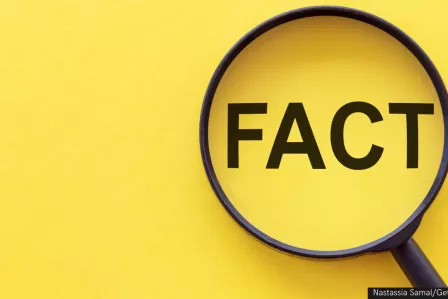Facts and opinions can easily get mixed up online. Media content shapes people's perceptions and influences their actions. Our interpretation and reaction to a certain piece of content is influenced by how it is structured as a fact or someone's opinion. Keep reading for some pro tips on how to identify trustworthy information, specifically when it comes to text-based content such as articles or blog entries.

For several years now, Finland has been ranked first in the Open Society Media Literacy Index, which assesses the ability of European countries to combat the negative impact of fake news and misinformation on society. The index looks at countries' education levels, freedom of expression, trust between people and online participation.
According to the report published by the Digital and Population Data Service Agency in 2022, the international comparison shows that Finland still has a lot of work to do, for example, in developing skills. According to the report, verifying the accuracy of information content found online that seems untrue remains unchecked in Finland more often than in other countries, precisely because of a lack of skills. The data is based on a Eurostat study.
Keep this in mind when considering the reliability of a piece of information
- Type of text: whether it is an opinion piece, for example, or an informative text whose facts can be checked against research sources, statistics or similar.
- Author: assess the expertise and background of the author. If the article refers to an "expert", the reader should be able to check why the person is an expert in the field. For example, are they a researcher on the subject, or do they represent an expert organisation?
- Publication context: where was the article published? Is there a publication threshold in the place of publication, i.e. has the content gone through an editorial process?
- Sources: what is the source of the article? Do you think the sources used are credible for the subject of the story?
- Perspectives: whose perspective does or does not appear in the story? Are the perspectives presented in the story?
- Motives for sharing: who benefits if the information or perspective is shared? And who might be harmed?
- Your own attitudes: consider whether your own prejudices might influence your assessment of the news.
More tips
- Use reverse image search. Dramatic images of accidents and disasters go viral easily. However, the picture may be from a completely different time and place.
- Compare the information with other sources and your basic knowledge.
- Remember the slowly accumulating nature of scientific information. This includes the fact that published research findings are often contradictory. Testing them and assessing their validity is at the heart of doing science.
Find out more about the work of the Finnish Safer Internet Centre, including its awareness raising, helpline, hotline and youth participation services – or find similar information for Safer Internet Centres throughout Europe.
Facts and opinions can easily get mixed up online. Media content shapes people's perceptions and influences their actions. Our interpretation and reaction to a certain piece of content is influenced by how it is structured as a fact or someone's opinion. Keep reading for some pro tips on how to identify trustworthy information, specifically when it comes to text-based content such as articles or blog entries.

For several years now, Finland has been ranked first in the Open Society Media Literacy Index, which assesses the ability of European countries to combat the negative impact of fake news and misinformation on society. The index looks at countries' education levels, freedom of expression, trust between people and online participation.
According to the report published by the Digital and Population Data Service Agency in 2022, the international comparison shows that Finland still has a lot of work to do, for example, in developing skills. According to the report, verifying the accuracy of information content found online that seems untrue remains unchecked in Finland more often than in other countries, precisely because of a lack of skills. The data is based on a Eurostat study.
Keep this in mind when considering the reliability of a piece of information
- Type of text: whether it is an opinion piece, for example, or an informative text whose facts can be checked against research sources, statistics or similar.
- Author: assess the expertise and background of the author. If the article refers to an "expert", the reader should be able to check why the person is an expert in the field. For example, are they a researcher on the subject, or do they represent an expert organisation?
- Publication context: where was the article published? Is there a publication threshold in the place of publication, i.e. has the content gone through an editorial process?
- Sources: what is the source of the article? Do you think the sources used are credible for the subject of the story?
- Perspectives: whose perspective does or does not appear in the story? Are the perspectives presented in the story?
- Motives for sharing: who benefits if the information or perspective is shared? And who might be harmed?
- Your own attitudes: consider whether your own prejudices might influence your assessment of the news.
More tips
- Use reverse image search. Dramatic images of accidents and disasters go viral easily. However, the picture may be from a completely different time and place.
- Compare the information with other sources and your basic knowledge.
- Remember the slowly accumulating nature of scientific information. This includes the fact that published research findings are often contradictory. Testing them and assessing their validity is at the heart of doing science.
Find out more about the work of the Finnish Safer Internet Centre, including its awareness raising, helpline, hotline and youth participation services – or find similar information for Safer Internet Centres throughout Europe.
- misinformation media literacy media education fake news disinformation
Related content
- < Previous article
- Next article >












